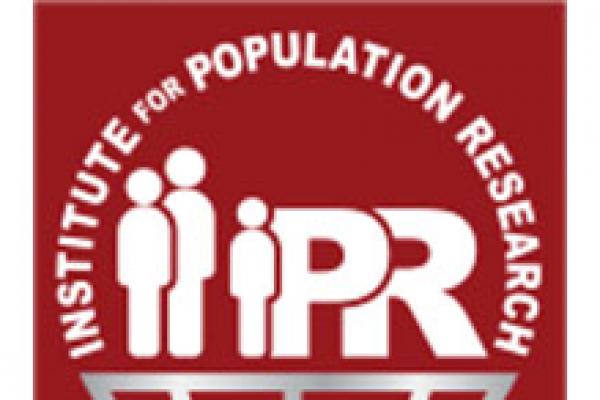
Call for Proposals
Institute for Population Research 2016 Seed Grant Announcement
Deadline for applications: Wed, Dec 9, 2015, 4:00 p.m.
IPR offers seed grants to nurture research projects consistent with IPR’s mission to promote population science research. IPR favors multi-disciplinary collaboration. We especially encourage applications from junior faculty, and from faculty new to population and health research.
Funding for this seed grant program is drawn primarily from our NICHD P2C award. See below for the scientific mission of the NICHD Population Dynamics Branch [PDB]. Priority is given to research which falls within one or more of IPR's four thematic areas: (i) Fertility and Reproductive Health; (ii) Union Formation/Dissolution; (iii) Health and Development through the Life Course; (iv) Migration. If you are unsure if your research fits, you are welcome to discuss with IPR Director John Casterline. See: https://ipr.osu.edu/seedgrants for examples of past IPR seed grants.
The goal of this program is to seed projects which have the potential to compete successfully for external awards -- NIH, NSF or other agencies that fund research encompassed by the NICHD/IPR mission. Hence it is expected that seed grants will lead to the submission of a grant proposal. It is also expected that IPR will receive a portion of the indirects (e.g. 10%-20%) when an external award is secured.
The structure of seed grant projects, and the activities which they fund, can take many forms. We are deliberately flexible, within the boundaries set by the above criteria. In general, seed grant projects fall into one of two classes:
1. Small and focused. This class is the "traditional" IPR seed grant. Typically these projects have 1-2 investigators, twelve months’ duration (with option for no-cost extension), and a budget of $15,000 - $30,000. R01, R21, and R03 applications to NIH are common outcomes.
2. Large multi-investigator project. These projects should involve 3+ investigators; maximum duration is twenty-four months, and maximum budget is $75,000. The expected outcome is a program project submission to NIH (P01), multiple NIH R01 applications, or the equivalent. IPR has established this new mechanism because we appreciate the challenge of organizing the scientific team and preparing the preliminary evidence and infrastructure required to compete successfully for external funding for large projects. We give priority to interdisciplinary teams of scholars who propose projects with innovative scientific aims and/or research designs, projects which will contribute to building IPR as a research center, and projects which effectively take advantage of other emerging strengths and investments at Ohio State, in particular the Discovery Theme initiatives.
Application Format and Deadlines
Applications must comply with IPR application format. Please contact Jill Morris [morris.856@osu.edu] for templates.
New this year:
Junior faculty must have a mentor identified on the application
NIH new biosketch format
Preference for investigators not previously funded in the last 4 yrs
Allowable expenses under IPR seed grants include: investigator salary (academic year or summer); GRA stipend and tuition; research materials, data acquisition; preliminary analysis (including software development); pilot fieldwork and instrument development; meetings with visitors and shared support for multidisciplinary teams of researchers (including travel expenses); consultation with collaborators and experts outside OSU.
Formats for the two types of applications (#1 and #2 above) are as follows:
1. Small projects. The application consists of text describing the proposed work (maximum 4 pages, plus references), a cover page, budget page and justification and NIH new format biosketch.
2. Large projects. The application consists of text describing the proposed work (maximum six pages, plus one page for references), a cover page, budget page and NIH new format biosketch for each investigator. The text should first discuss the scientific themes which tie together the separate sub-projects, followed by sections describing each sub-project. Additional sections should discuss:
(a) How the proposed project will contribute to the development of IPR as an interdisciplinary population and health research center. It is expected, for example, that project infrastructure will be based in IPR, to the extent appropriate and feasible. You are encouraged to discuss in advance with IPR Director Casterline the resources IPR currently offers to support research projects as well as emerging plans for expanding IPR capabilities (e.g. in data and computing services).
(b) How the proposed project will take advantage of other existing and emerging initiatives and resources at Ohio State.
Applications must be received by Wed, Dec 9, 2015 at 4:00 p.m.
Submit to Jill Morris [morris.856@osu.edu]. Review will be completed by Jan 14, 2016 and earliest start-date will be May 1, 2016.
NICHD Population Dynamics Branch [PDB] scientific mission:
PDB supports research in demography, reproductive health, and population health:
· In demography, the Branch supports research on the scientific study of human populations, including fertility, mortality and morbidity, migration, population distribution, nuptiality, family demography, population growth and decline, and the causes and consequences of demographic change.
· In reproductive health, the Branch supports behavioral and social science research on sexually transmitted diseases, HIV/AIDS, family planning, and infertility.
· In population health, the Branch supports data collection and research on human health, productivity, behavior, and development at the population level, using such methods as inferential statistics, natural experiments, policy experiments, statistical modeling, and gene/environment interaction studies.
